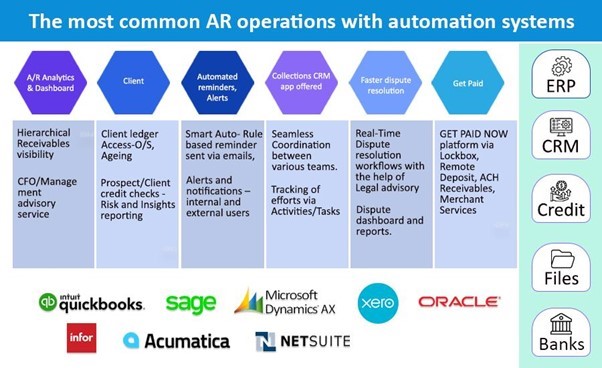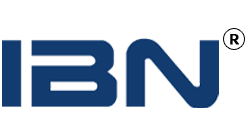

Maintaining accounts receivable best practices can be a daunting task for bookkeeping services for small businesses. There are so many things to remember, and it can be difficult to keep track of it all. That's where automation comes in. Automation can help you stay organized and efficient, which is essential for maintaining good financial practices. In this blog post, We'll explore the six services that accounts receivable automation systems use the most frequently.
In many different businesses, AR operations may automate a wide range of tasks. The following are a few typical scenarios of AR operations performed with automation systems today.

In general, A/R analytics and dashboard systems can offer a variety of essential features and services to assist firms in streamlining their A/R operations and enhancing their financial success. These tools can support firms in making data-driven decisions and adopting a more proactive approach to managing their A/R by delivering real-time data and insights.
A client ledger is a record of financial transactions that a client has with a business. It typically includes information about the amount of money that the client owes, as well as the terms of payment and any relevant due dates. The client ledger may also include other details about the transaction, such as the date of the transaction and a description of the goods or services provided.
Access to a client ledger is important for businesses to keep track of their financial transactions with their clients and to ensure that they are being paid on time. It can also be useful for identifying any potential issues or risks with a particular client, such as if they have a history of not paying on time or if they have a high level of debt.
Aging refers to the length of time that a client's debt has been outstanding. This information is typically included in a client ledger and can be used to identify which clients may be at risk of not paying their bills on time.
Prospect/client credit checks are a way for businesses to assess the creditworthiness of potential clients or customers. This can be useful for businesses that are considering extending credit to a client or that want to ensure that they are working with financially stable clients.
Risk and insights reporting can provide businesses with detailed information about a client's financial situation, including their credit history, payment history, and any potential risks or issues that may arise in the future. This can help businesses make informed decisions about whether to extend credit or enter into a financial relationship with a particular client.
A collections CRM app can help businesses manage their client relationships and financial transactions more efficiently, by providing a centralized platform for communication, tracking efforts and tasks, and automating responses to client inquiries.
A collections CRM (customer relationship management) app is a tool that helps businesses manage their financial transactions and client relationships.
Collections CRM app provides a centralized platform for communication and collaboration, a collections CRM app can help ensure that all team members are on the same page and working towards the same goals.
Another important feature of a collections CRM app is the ability to track efforts via activities and tasks. This app can help businesses manage their client relationships and financial transactions more efficiently, by providing a centralized platform for communication, tracking efforts and tasks, and automating responses to client inquiries.
It can help to minimize the impact of disputes on their financial performance and operations. There are several key features that can help businesses resolve disputes more quickly:
"Get Paid" is a term that refers to the process of receiving payment for goods or services that have been provided. There are several key features that can help businesses get paid more quickly and efficiently:
Overall, these features can help businesses streamline their collections and payment processes and get paid more quickly and efficiently.
IBN Tech offers A/R automation and provides more than simply the option to utilize bots to make jobs simpler. Offering the best-outsourced accounting services supports end-to-end functions of accounting to make the most of process reform and data analytics. Ready to discover what IBN Tech can achieve for your company?
